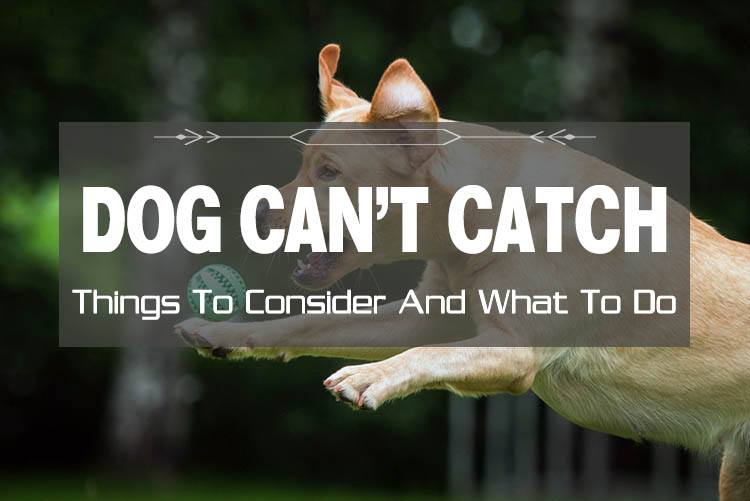Bath time can be a dreaded experience for many dog owners—and even more so for their pets. But why do dogs hate baths so much? From unfamiliar smells and slippery tubs to feeling trapped or remembering past negative experiences, there are many reasons dogs resist getting clean. Understanding what’s behind their anxiety can make a big difference. In this article, we’ll explore the common causes of bath-time stress and share practical, dog-friendly tips to help you turn bath time into a calmer, more positive routine for your pup.
Key Takeaways
- Dogs often dislike baths due to negative past experiences, lack of control, and sensory overload during the process.
- Creating a positive association with bath time involves using gentle methods, maintaining a calm demeanor, and employing rewards like treats.
- Regular beauty care, including baths, is essential for a dog’s comfort, health, and maintenance. The frequency depends on the dog’s fur type and lifestyle.
Common Reasons Why Dogs Hate Baths
Most dogs dread bath time. Just hearing the word can make them hide and whine. So, why do dogs dislike bathing? Often, it’s because of negative experiences and discomfort. Some dogs may have had negative experiences with horrible owners, such as mistreatment or rough handling, which can contribute to their fear of baths. If a dog has ever been scalded by hot water or had soap stinging their eyes, they are likely to associate bath time with pain and discomfort.
Another reason dogs feel anxious about baths is the overall process. The act of being confined to a small space, handled in ways they are not used to, and exposed to unfamiliar sensations can be incredibly stressful. Fido feel nervous often expresses their unhappiness both before and during bath time, making it clear that this is not an activity they enjoy.
Dogs frequently associate baths with negative experiences and discomfort, leading to a poor association with bath time for canine patients. Understanding these reasons can help you approach bath time with more empathy and patience, paving the way for a few typical possibilities for fewer baths and a more positive ones experience, as they often feel better after a bath. However, not all dogs hate baths—many do for the reasons discussed, but some may tolerate or even enjoy them.
Fear of Water and Negative Associations
Dogs can develop a fear of baths from a single traumatic event. Imagine having hot water accidentally poured on you or getting soap in your eyes—it’s enough to make anyone wary of bath time. For dogs, these experiences can lead to a long-lasting fear of water and negative associations with baths.
Past experiences play a significant role in how dogs perceive bath time. Yelling or rough handling during grooming can lead to anxiety the next time a dog hears the dreaded b word. Additionally, even everyday occurrences like water getting into their nose or slipping in the tub can contribute to their negative feelings towards baths. Dogs do not process memories in the same manner as humans; their associations with baths are based on sensory experiences rather than logic.
Dogs thrive on familiar routines, so introducing something as unfamiliar as a bath can make them frequently suspicious and fearful. The noise of running water and the sensation of being scrubbed can be particularly distressing for them. Understanding these fears and working to create positive associations can help alleviate their anxiety over time.
Loss of Control During Bath Time
One of the primary reasons dogs hate baths is the loss of control they experience. Unlike swimming or rolling around in mud puddles, bath time is not a voluntary activity for them. Being forced into a tub and restrained can make them feel exceedingly uncomfortable and stressed. Additionally, many dog hate baths, which further complicates the bathing process.
Dogs enjoy having the freedom to move and explore, but during bath time, they are often handled and restricted in ways they find unsettling. This lack of choice can be particularly distressing and lead to a reluctant pet in cooperating. The feeling of being prodded and handled can exacerbate their anxiety, turning bath time into a dreaded experience, making a dog feel even more uncomfortable, potentially experiencing doggy ptsd.
Fido’s antics, such as trying to escape the tub or splashing water everywhere, are common reactions to the stress and loss of control dogs feel during bath time.
For dogs that are not used to regular baths, the unfamiliarity of the process can add to their unease. The sensation of hot water, the confinement of the tub, and the overall lack of control make bath time a significantly stressful event. Ensuring that your dog feels more in control during the process can help in reducing their anxiety.
Sensory Overload: Smells, Sounds, and Slippery Surfaces
Bath time can be a sensory overload for dogs. The unfamiliar scents from shampoos and soaps can alter their perception of their own smell, making them uncomfortable. Fido’s delicate nose relies heavily on their sense of smell, and these new and strong scents can be overwhelming, contributing to their reluctance to bathe. Fido’s natural fragrances can provide a more pleasant experience during bath time.
The loud noises associated with bath time, such as the sound of running water, can also create anxiety. Combined with slippery bathtubs, this creates a highly stressful environment. Dogs can feel insecure and unstable when they can’t get proper footing, leading to increased resistance and fear.
Changes in water temperature and pressure from scrubbing can overwhelm dogs during a bath. This sensory overload can make bath time exceedingly uncomfortable for them. By understanding these factors, you can take steps to create a more soothing tone and less intimidating bathing experience for your dog.
Impact of Human Emotions on Dogs During Baths
Dogs are incredibly perceptive and can sense their owner’s emotions. If you approach bath time with stress or anxiety, your dog will likely pick up on these bad vibes and mirror them. A dog’s perception of bath time can be heavily influenced by their owner’s emotional state, making it crucial to maintain a calm and positive demeanor.
Yelling or rushing can instill fear in dogs about bath time. Shouting, rough handling, and rushing can teach dogs to fear baths, increasing reluctance in the future. Avoiding these behaviors can create a more positive experience.
A calm and encouraging attitude from the owner can significantly improve a dog’s reaction to baths. By maintaining a positive demeanor and being patient, you can help reduce your dog’s anxiety and make bath time a more pleasant activity. Remember, your emotions can directly impact how your dog feels, so strive to make the experience as stress-free as possible.
Importance of Regular Baths for Dogs
Regular baths maintain your dog’s health and hygiene by:
- Preventing the accumulation of dust, filth, and dander, which can lead to skin issues.
- For hairless breeds, preventing their skin from drying out.
- For long-haired breeds, avoiding mats that can cause discomfort in the dog’s fur, while also benefiting from the dog’s fur’s insulating properties. Frequent baths can also enhance these benefits, keeping the dog’s smooth fur in optimal condition.
Dogs with fluffy fur are especially prone to mats and require more frequent grooming to prevent tangles and maintain cleanliness.
Dogs that do not receive regular baths may find the experience unfamiliar and anxiety-inducing. The more infrequent the baths, the more likely your dog is to feel stressed and fearful when it’s time for one. Accustoming your dog to bath time can reduce anxiety and smooth the process for both of you.
Mats can cause discomfort and, in severe cases, make it difficult for dogs to stand correctly, emphasizing the importance of regular grooming to prevent mobility issues.
Knowing your dog’s large breed-specific needs can help determine the appropriate bathing frequency and maintain their health. Regular baths not only keep your dog clean but also contribute to their overall well-being, making it an important aspect of proper care for your pet.
How Often Should You Bathe Your Dog?
The frequency of baths depends on your dog’s fur type and lifestyle. Short-haired breeds typically require baths every 6-8 weeks due to their easy maintenance. In contrast, medium or long fur breeds and long haired dogs generally need baths more frequently, around every 3-4 weeks, to avoid tangles and mats. Hairless puppies also require frequent baths due to their lack of fur.
Double-coated dogs should be bathed every 4-6 weeks to prevent matting and skin problems. Additionally, the lifestyle of your dog, such as being active outdoors, can necessitate more frequent bathing. Hairless pups need more frequent baths to manage oil buildup and maintain skin health. These general guidelines can help you determine the most suitable bathing schedule for your double coats dog.
Consulting with your fl veterinarian or breeder can provide personalized bathing advice based on your dog’s specific needs. They can help you create a grooming routine that ensures your dog stays clean and healthy without causing unnecessary stress or anxiety.
Bath Time Preparation
Bath time doesn’t have to be a dreaded event for you or your dog—preparation is key to making the experience as smooth as possible. Before you even turn on the tap, gather all your supplies: dog-friendly shampoo, plenty of towels, and a non-slip mat to keep your pup steady in the tub. Checking the water temperature is crucial; lukewarm water is best, as water that’s too hot or too cold can make dogs uncomfortable and add to their anxiety.
If your dog has medium or long fur, take a few minutes to brush out any tangles or mats before the bath. This not only makes washing easier but also helps prevent painful knots from forming when the fur gets wet. For dogs with long fur, a thorough pre-bath brushing can make a world of difference in keeping their coat healthy and manageable.
Consider your dog’s unique needs—some dogs may require a special shampoo for sensitive skin, while others might need you to avoid certain areas that are sore or healing. By thinking ahead and tailoring your approach to your dog’s preferences, you can help make regular baths a more positive experience. With a little planning, bath time can become less stressful and more routine, helping your dog stay clean, healthy, and happy.
Tips to Make Bath Time Easier
Making bath time easier for your dog involves a few simple but effective strategies:
- Use lukewarm water to help keep your dog comfortable.
- Bathe dogs indoors to create a calmer environment.
- Eliminate distractions and fears associated with outside noises by bathing indoors. Don’t forget to bathe tiny fido for a stress-free experience and stay warm.
Tips for bathing your dog:
- Make your dog feel more secure by using a non-slip mat in the bathtub to help keep them from slipping.
- Select a mild and gentle shampoo to prevent skin irritation, especially for dogs with sensitive skin.
- Use containers instead of showerheads or faucets to allow better control over water flow, making it less intimidating for dogs.
- Avoid spraying water directly on your dog’s face or sensitive areas to reduce stress and discomfort.
- Form positive associations with bath time by rewarding your dog with treats and praise, making the experience enjoyable and less stressful.
Taking breaks and not rushing can reduce stress for both dog and owner. A calm dog companion during bath time can comfort and reassure a nervous pet. Chew toys or treat-filled puzzles can keep your dog occupied during bath time, such a chew reducing anxiety.
Positive Reinforcement Techniques
Positive reinforcement can make bath time more pleasant for your dog. Effective methods include:
- Using a high value treat, like steak, to motivate your dog during bath time.
- Praising your dog during the bath.
- Immediately reward fido with treats or toys during the bath to create a positive association.
Gradual exposure to water can help anxious dogs become more comfortable with bathing. Early bath introductions can help puppies become accustomed to the experience over time. Training your dog to enter and exit the bathtub with treats and commands can ease the physical challenge of bathing them. Here’s how you can approach it:
- Gradually expose your dog to water to reduce anxiety.
- Introduce baths early to puppies to help them get used to the experience.
- Use treats and commands to train your dog to enter and exit the bathtub comfortably.
Professional Grooming Assistance
If your dog continues to hate baths despite your best efforts, it may be time to consider seeking professional help. Professional groomers are trained to handle dogs with varying temperaments and can manage those anxious about baths. Many pet clinics offer grooming services and can help with anxious dogs. They can provide a more controlled and less stressful environment for your dog. Consulting your local veterinarian can also provide expert advice on managing your dog’s fear of baths.
Mobile grooming services can be a great option for dogs that dislike baths, as they provide the convenience of coming to your location and leaving your pet with a salon fresh feel and sleek fur. This can help reduce the stress associated with traveling to a grooming salon. Some pet hospitals provide comprehensive grooming, boarding, and veterinary care, making them a one-stop destination for your pet’s health and wellness needs. Pet clinics can also address your pet’s rooming requirements during grooming or boarding visits.
If all else fails, seeking help from professional dog trainers may be beneficial in managing your dog’s fear of baths.
For any questions or to book an appointment, contact your local pet hospital today.
After the Bath: Ensuring Comfort and Positive Associations
Once bath time is over, helping your dog feel comfortable and secure is just as important as the wash itself. Start by gently patting your dog dry with a soft towel—avoid vigorous rubbing, especially if your dog has sensitive skin or long fur that can tangle easily. For dogs with long fur, using a blow dryer on a low, cool setting can help speed up the drying process and keep their coat fluffy and tangle-free. If your dog has smooth fur, a thorough towel dry is usually all they need to feel better after a bath.
To turn bath time into a more positive experience, immediately reward your dog with a high value treat and plenty of praise. This helps create positive associations and can make even the most reluctant pet less likely to hate baths in the future. Set up a cozy, quiet spot where your dog can relax and recover from the excitement—this is especially helpful for dogs that may be experiencing doggy PTSD or lingering anxiety from negative associations with baths.
By being gentle, patient, and attentive to your dog’s needs after the bath, you help your dog feel safe and cared for. Over time, these positive associations can make bath time less stressful and even enjoyable, ensuring your dog feels better after a bath and is more willing to cooperate next time. With consistent care and a little extra love, you can help your dog overcome their dislike of baths and keep their coat looking its best.
Summary
Understanding why dogs hate baths—from fear of water and sensory overload to a loss of control—can help transform a stressful chore into a more manageable experience. With patience, empathy, and preparation, bath time can become less intimidating for your pup. One of the most effective strategies is using positive reinforcement techniques, like treats, praise, and gradual exposure, to help your dog build better associations with getting clean. And when needed, professional grooming support can also make a big difference.
Looking for more dog care tips and behavior advice? Check out our helpful guides designed to support you and your pup every step of the way.
Frequently Asked Questions
Why do dogs hate baths?
Dogs often dislike baths because of previous negative experiences, discomfort, or feeling overwhelmed. Their sense of losing control during the bath can heighten their anxiety, making the whole experience unpleasant for them.
How often should I bathe my dog?
You should generally bathe your dog every 6-8 weeks for short-haired breeds, and 3-4 weeks for long-haired ones. Just keep an eye on their fur and lifestyle, as that can change how often they need a wash!
What can I do to make bath time easier for my dog?
To make bath time easier for your dog, use lukewarm water, a non-slip mat, and a gentle shampoo. Plus, keep treats handy and speak softly to help calm any nerves!
Can professional grooming services help if my dog hates baths?
Absolutely, professional groomers can make bath time much easier for your dog by creating a calm environment and using their expertise to handle anxious pups. Plus, mobile grooming services can bring the bath right to your home, making it even less stressful!
Why is regular bathing important for my dog?
Regular bathing is key to keeping your dog healthy and clean, as it prevents dirt and dander buildup that can cause skin problems. Plus, it’s especially important for breeds that need more grooming attention.




